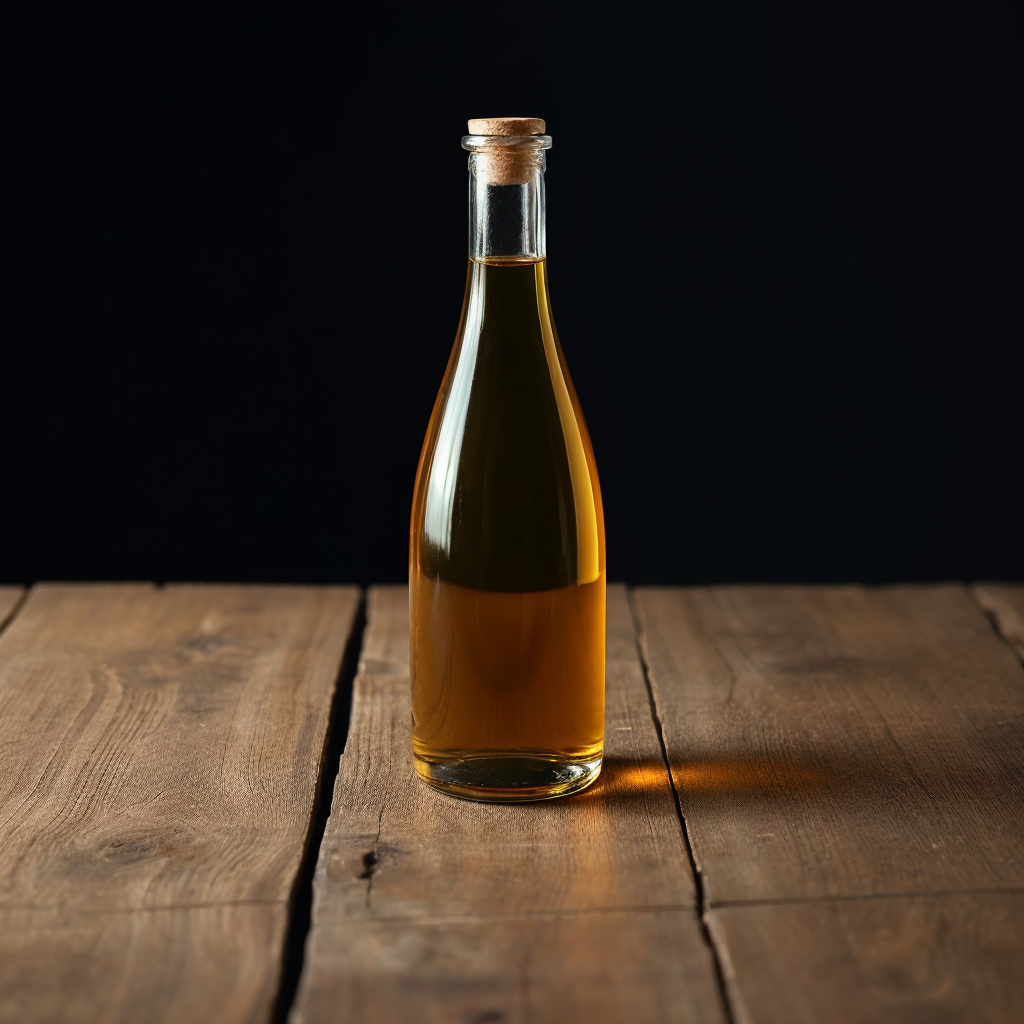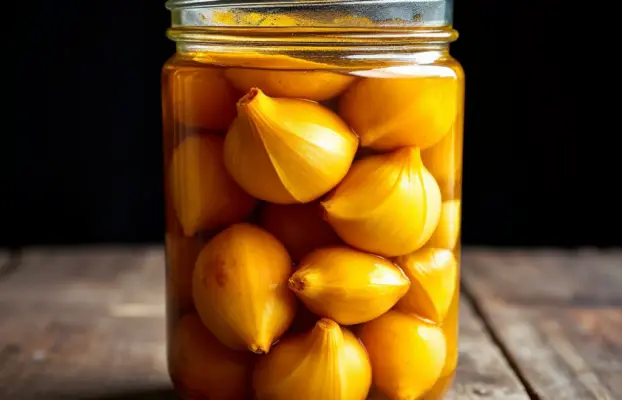Olive Oil Guru
Discover the rich history, health benefits, and versatile uses of olive oil. From recipes to expert insights, we have everything you need to become an olive oil aficionado.
Who We Are
Olive Oil Guru is your trusted source for everything olive oil. Led by Chandra Baird, an expert in the field, we are dedicated to sharing the rich heritage and health benefits of olive oil. Our team is committed to educating and inspiring consumers to appreciate and choose the best quality olive oil for their everyday needs.
Mission Statement
Our mission is to educate and empower consumers with the knowledge to select and enjoy the finest olive oil. We strive to elevate awareness of olive oil's health benefits and culinary potential through accessible, expert-driven content.
Our Goal
At Olive Oil Guru, our goal is to build a community of informed and passionate olive oil enthusiasts. We provide expert insights, practical guides, and reliable product recommendations, making us the go-to resource for anyone seeking to enhance their olive oil experience.
Edited by Chandra Baird
Chandra Baird is a passionate olive oil connoisseur and seasoned film producer with a diverse background in the entertainment industry. Having worked on acclaimed films like All in Time (2015), Chandra’s keen eye for detail and love for storytelling naturally extended to her culinary adventures. As an expert in olive oil, she has spent years exploring the rich traditions and subtleties of this ancient ingredient, traveling to the Mediterranean’s lush olive groves and studying with artisans. Her deep knowledge of olive oil, paired with her dedication to quality, makes her an invaluable editor for the Olive Oil Guru, ensuring that every detail is refined and every story is told with precision.
The History of Olive Oil
Discover the ancient roots and journey of olive oil, a timeless treasure cultivated for millennia.
Explore its evolution from Mediterranean groves to tables worldwide.
Around 8,000 years ago, early humans in the Eastern Mediterranean—modern-day Syria, Palestine, and Lebanon—began harvesting wild olives. By approximately 6,000 BCE, the cultivation of olive trees had started, leading to the production of olive oil. The discovery likely occurred as early humans crushed the fruit and found that it yielded a rich, golden liquid with multiple uses. Olive oil quickly became a staple in both food and daily life.
By 3,000 BCE, olive oil was widely used in ancient Egypt, primarily in religious rituals, medicine, and cosmetics such as the embalming of mummies. Simultaneously, on the island of Crete, the ancient Minoans were using olive oil as a cornerstone of their economy, with evidence of its production and trade dating back to 2,500 BCE.
Around 1,500 BCE, the use of olive oil had spread to ancient Greece, where it became an essential part of daily life. Greek athletes used olive oil to anoint their bodies before competitions, while it was also valued for its health benefits and religious significance. The Greeks even considered it sacred, as legend holds that the goddess Athena created the olive tree as a gift to humanity.
By the 2nd century BCE, the Romans had significantly advanced olive oil production, developing new cultivation techniques and pressing methods. The Roman Empire's expansion led to the widespread trade of olive oil across Europe, North Africa, and the Middle East. Between the 1st and 4th centuries CE, Rome's olive oil trade flourished, with large quantities produced in regions such as Baetica (modern-day Spain) and North Africa.
In the 8th century CE, during the Islamic Golden Age, olive oil continued to spread throughout the Mediterranean, particularly in Islamic Spain (Al-Andalus). The Moors, who ruled much of the Iberian Peninsula from the 8th to the 15th centuries, promoted olive cultivation and trade. By the Middle Ages, Spain had become a major producer of olive oil, exporting it across Europe.
During the Italian Renaissance in the 15th and 16th centuries, olive oil experienced a resurgence in popularity. It became central to the culinary traditions of regions such as Tuscany and Umbria, while continuing to be used in medicine and religious rituals. Olive oil remained highly prized in Italy and across the Mediterranean.
In the 18th and 19th centuries, with the advent of the industrial revolution, olive oil production methods modernized, and global trade increased. By the 20th century, Spain, Italy, and Greece had become the largest producers of olive oil in the world. Spain, in particular, emerged as the dominant producer, with over 40% of the world's olive oil supply.
In the 1980s and 1990s, scientific studies on the health benefits of olive oil helped popularize the Mediterranean diet worldwide. This resulted in a surge in global demand, with new olive oil-producing regions emerging in places like California, Australia, and South Africa.
Throughout history, olive oil has been used for a variety of purposes beyond cooking. From 1,500 BCE onwards, it served as a base for perfumes and ointments in ancient Egypt and Greece. In Rome, it was used as a fuel for oil lamps and a component in religious ceremonies. Across the ages, olive oil was also used in medicine, as ancient Greeks and Romans believed it had healing properties, applying it to wounds and skin conditions.
Nature's Secret Health Elixir
Unlock the ancient benefits of olive oil for a healthier body and mind.
Discover how this golden liquid can transform your health.

Heart Health Booster
Rich in antioxidants and monounsaturated fats, olive oil supports your cardiovascular system, promoting a healthy heart.

Anti-Inflammatory Powerhouse
Olive oil’s natural compounds work to reduce inflammation, providing relief and aiding in the prevention of chronic conditions.

Immune System Strengthener
Packed with nutrients, olive oil boosts your immune system, helping you fight off illness and stay strong year-round.

Supports Brain Function
The healthy fats in olive oil help nourish the brain, improving cognitive function and protecting against age-related decline.
Doctors in the Know: Olive Oil's Heroic Health Benefits
Discover why leading doctors recommend olive oil as a powerful, natural tool for promoting a healthier, longer life.
While olive oil’s health benefits are undeniable, not all olive oils are created equal. To truly harness its full potential, the key lies in the quality. Let’s dive into what sets premium olive oil apart.
Extra virgin olive oil
Highest quality with a fruity, robust flavor and less than 0.8% acidity. Best for dressings, dips, and low-heat cooking.
Virgin olive oil
The others
Now What About Color, Clarity, and Viscosity?
While the color of olive oil can vary, from red, to yellow, to the typical olive
color, do not worry too much about it, as it is more of an indication of where
exactly the olives are sourced from, and not about the quality.



Average Olive Oil
Typically comes from Mediterranean countries like Greece, Italy, and Spain, where olives are harvested and pressed for extra virgin olive oil.
Orange Olive Oil
Commonly produced in Sicily, where olives are blended with citrus fruits like oranges during the pressing process.
Red Olive Oil
Occasionally found in Morocco or Northern Africa, where specific varieties of olives or blending techniques yield the red hue.
Infused Olive Oil?
Now this is a common question that we get all the time, and we have one verdict. MAKE YOUR OWN. infused olive oil has historically been used to cover up a bad batch of olive oil. If you enjoy the flavor of rosemary, chili pepper, or for you fancy ones, truffle in your olive oil, we always recommend making your own.
Our Favorite Recipes
Bread dipping oil
August 16, 2024Ingredients: Instructions: Use: Perfect for dipping fresh bread, such as baguettes or ciabatta.
Garlic Confit
August 16, 2024Ingredients: Instructions: Use: Garlic confit is perfect for spreading on bread, mixing into pasta, or adding to sauces for extra flavor.
Potential Contaminants
Olive oil can be vulnerable to contamination during various stages of its production and storage. Some potential contaminants include:
These are often found in trace amounts in olive oils due to their use in olive cultivation. Organophosphates and organochlorines are commonly detected in contaminated oils.
Lead, cadmium, and arsenic can enter olive oil through soil contamination or processing equipment, posing a health risk if consumed in large quantities.
These are harmful compounds that can accumulate in olive oil due to exposure to smoke during processing or environmental pollution. This is why we advocate for cold pressed olive oil specifically.
These chemicals, often used in food packaging, can leach into olive oil during storage if proper precautions are not taken.
Regular quality control and testing are essential to ensure that olive oil remains free from these contaminants, ensuring its safety for consumption.
How to Find Good Quality Olive Oil
To find the best quality olive oil, look for Extra Virgin Olive Oil (EVOO), which has the lowest acidity (below 0.8%) and is made from cold-pressed olives without chemicals or heat. Ensure the bottle mentions "cold-pressed" or "first cold press" and opt for dark glass bottles, which protect the oil from light damage, as well as greatly minimizes Phthalate exposure.. Check the harvest date on the label—fresher is better—and choose single origin oils, oils that indicate the origin, ideally from trusted Mediterranean countries like Italy, Spain, or Greece. Finally, look for certifications like PDO or PGI, which ensure authenticity and quality.
$11.98/375ml Bottle
Cobram Estate California Select Extra Virgin Olive Oil
$243/250ml Bottle
Sparta Limited Edition Medicinal Organic Wild EVOO
$35.80/16.9oz Tin
Nicolas Alziari Cuvee Prestige Extra Virgin Olive Oil
Expert Olive Oil Tips
Healthy Living Recipes
Exclusive Discounts & Offers
Early Access to New Products
Join Our Olive Oil Guru Community
Get exclusive insights, recipes, and tips straight to your inbox! Discover why joining our email list is a must for any olive oil enthusiast.
Olive Oil Brand Rating Scale
Our rigorous testing process evaluates olive oils on taste, cost, polyphenol content, and more, giving you the most comprehensive rating system available. Here are the top 10 olive oils, rated on a 1 to 10 scale.
1. California Olive Ranch Global Blend Extra Virgin Olive Oil
Rating: ★★★★★★★★☆☆ (8/10)
Overview: Balanced and fruity with a great price point. High in polyphenols, making it both tasty and heart-healthy.
2. Nicolas Alziari Cuvee Prestige Extra Virgin Olive Oil
Rating: ★★★★★★★★★☆ (9/10)
Overview: This luxurious French olive oil offers a smooth, buttery flavor with a hint of pepper. Exceptional in quality, though at a higher cost.
3. Sparta Limited Edition Medicinal Organic Wild EVOO
Rating: ★★★★★★★★★★ (10/10)
Overview: One of the most potent and pure EVOOs available, with impressive polyphenol levels and a rich, bold taste that’s unmatched.
4. Kirkland Signature Organic Extra Virgin Olive Oil
Rating: ★★★★★★★☆☆☆ (7/10)
Overview: Affordable and widely available, with decent flavor and polyphenol content for everyday use.
5. Lucini Premium Select Extra Virgin Olive Oil
Rating: ★★★★★★★★☆☆ (8/10)
Overview: This Italian olive oil is known for its rich, peppery flavor and solid polyphenol content, though slightly higher in cost.
6. O-Live & Co. Everyday Extra Virgin Olive Oil
Rating: ★★★★★★★☆☆☆ (7/10)
Overview: A solid option for everyday cooking with mild flavor and reasonable pricing.
7. Colavita Extra Virgin Olive Oil
Rating: ★★★★★★★★☆☆ (8/10)
Overview: A trusted name in olive oil, Colavita offers a balance of flavor and affordability, though slightly lacking in polyphenol content compared to others.
8. Partanna Extra Virgin Olive Oil
Rating: ★★★★★★★☆☆☆ (7/10)
Overview: Known for its robust flavor and versatile use, though not as high in polyphenols.
9. Pompeian Robust Extra Virgin Olive Oil
Rating: ★★★★★★★☆☆☆ (7/10)
Overview: An affordable option with a decent taste profile, though somewhat lower in antioxidant content.
10. Ellora Farms Extra Virgin Olive Oil
Rating: ★★★★★★★★★☆ (9/10)
Overview: A standout for its premium quality, rich flavor, and high polyphenol count, though it comes with a premium price tag.
Ask the Olive Oil Guru
Have questions about olive oil or need personalized recommendations? Our experts are here to help guide you in your journey to discover the best olive oils. Reach out and get answers from the Guru.








